The state of Tennessee is known for many good things. The Grand Ole Opry and country music, Bluegrass music, barbecue and “hot chicken,” good old Davy Crockett (born in East Tennessee), Goo Goo Cluster candy, moon pies, and the stunning rolling hills and Smoky Mountains are part of Tennessee, as well. Mention the words whiskey, bourbon and moonshine, and most people know these belong to Tennessee, also.
That means that anyone who is paying a visit has to take a sip or two, or three, of some of the region’s finest spirits. And if you are headed to Blount County, we suggest a visit to any of the following distilleries to warm you up from the inside! Most do taste-testing and some even have food pairings or full-blown restaurants attached, so go ahead and enjoy a few samples, eat a nice meal and take a few bottles home for holiday gifts or to get you through until your next visit to Tennessee.
Old Forge Distillery is located at 170 Old Mill Ave in Pigeon Forge and is famous for its small batch spirits that include moonshine, bourbon and vodka. It takes its name from the town’s historic iron forges and is even located next to an old forge and mill. This brand is made with grains ground by the producer and it has won many awards for its signature 1830 Original Moonshine.
The Sugarlands Distilling Co is located along 805 Pkwy in Gatlinburg and is known for its whiskey, moonshine and other spirits. Opened only in 2014, it promises to offer “a story in every jar” and includes a surprising number of award-winning concoctions. From a peppermint moonshine to seasonal specialties, it offers tastings of the latest offerings.
Ole Smoky Holler rates as the most frequently visited distillery in the nation, and is home to the Ole Smoky brand with locations like the Ole Smoky Moonshine Barn at The Island in Pigeon Forge and the Barrelhouse in Gatlinburg. A $5 sample fee lets you enjoy a few varieties and there is usually music to entertain.
Don’t forget to try the other famous stops, like Doc Collier Moonshine, too. Each stop has something unique and you’ll learn a lot about the history of Tennessee when you visit any one of these establishments to warm up and savor unique beverages.
Category: Blog
Waterfalls in The Great Smoky Mountains

There is no better outing during the summer than a trip to one of the many Waterfalls in the Great Smoky Mountains. Luckily, there are over 2,000 miles of rivers and streams in the national park, resulting in a series of over 100 cascades and falls. We have picked out a handful of beautiful hikes in the Peaceful Side of the park for every level of experience.
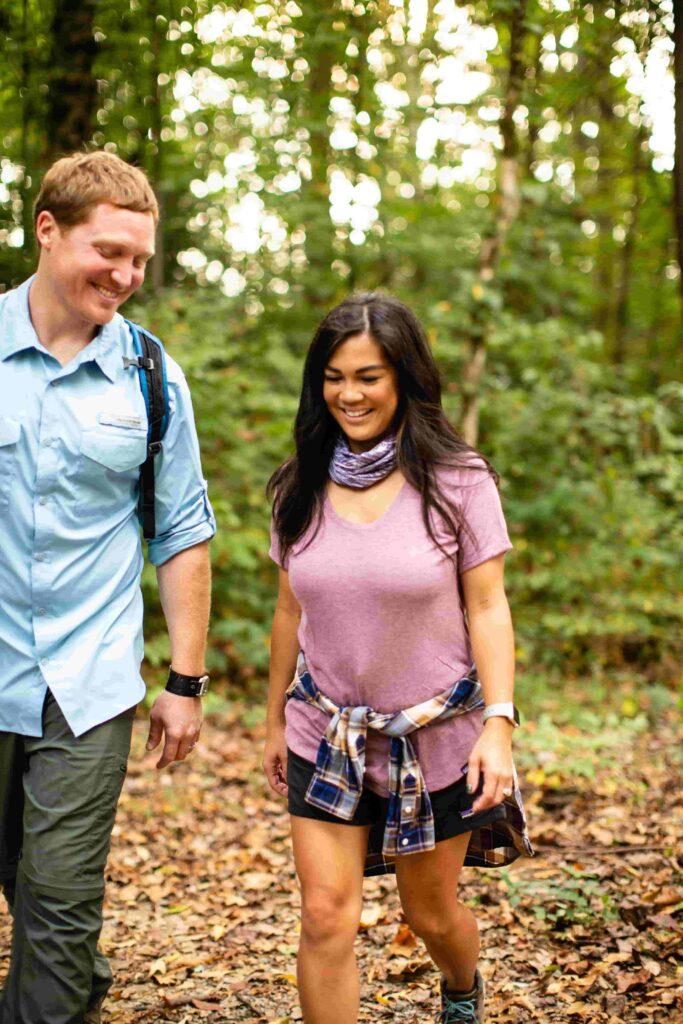
Meigs Falls
Meigs Falls is one of the most accessible waterfalls to visit. In fact, you can drive your car up to within 500 feet of the falls. The drop is only 28 feet, but it is nestled into a breathtaking spot of the Smokies.
Directions
Only located 12.9 miles west of the Sugarlands Visitor Center, near the Townsend “Wye”.
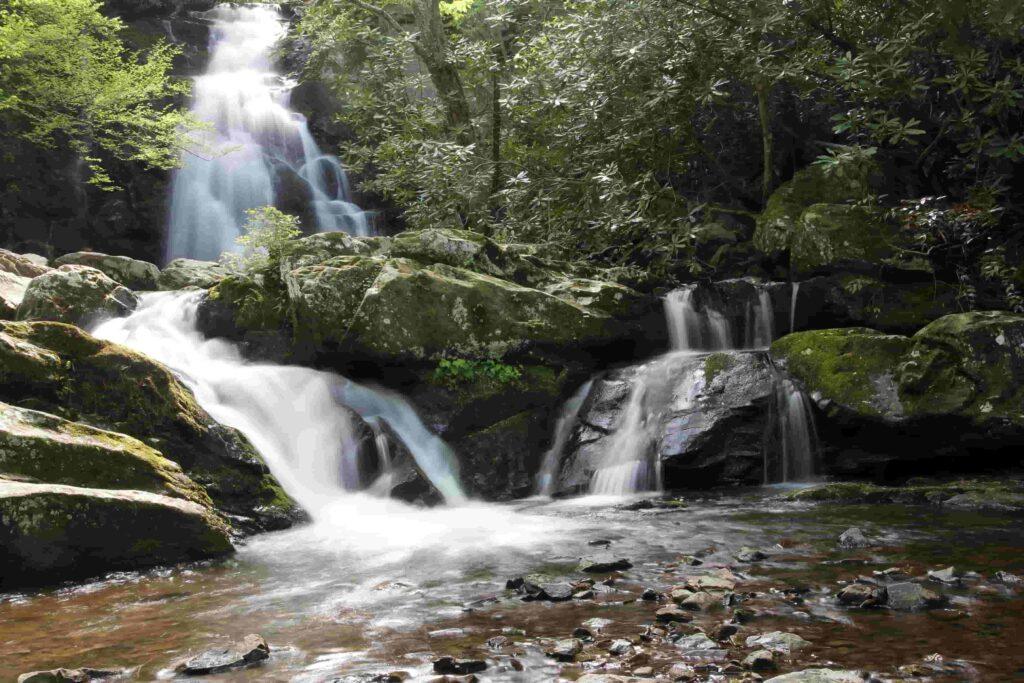
Ramsey Cascades
If you are looking for a more strenuous adventure, check out the Ramsey Cascades. The hike is 8 miles roundtrip, and as the tallest waterfall, it follows over 100 feet of tumbling cascades throughout the park. The trail to the waterfall gains over 2,000′ in elevation, passing through old-growth cove hardwood forest.
Direction
Take Highway 321 east of Gatlinburg to the Greenbrier entrance to the park. Follow the signs to the Ramsay Cascades trailhead.
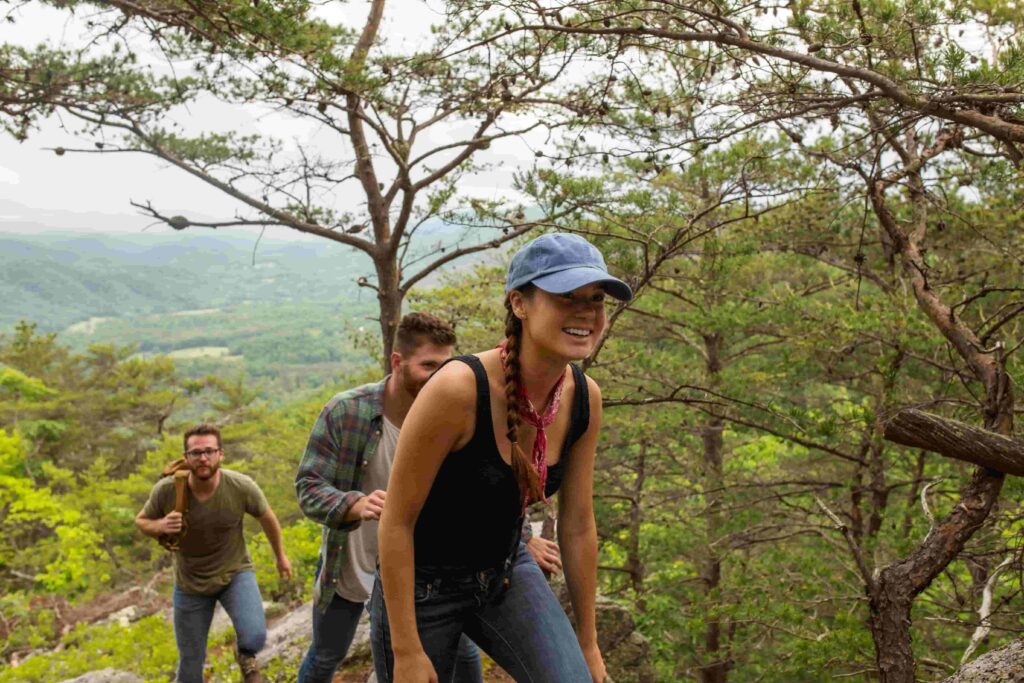
Spruce Flat Falls
The hike to Spruce Flat Falls is only two miles roundtrip, but it can get significantly steep, making it a more challenging hike. Located in the Tremont section of the park, a still relatively unknown area, there is a chance for a more private experience. At the bottom of the 30-foot fall, dropping in four stages, you will find a pool of water perfect for a refreshing summer swim.
Directions
You will find this trail located on Tremont Road near Smokey Mountain Institute at Tremont, near Cades Cove.
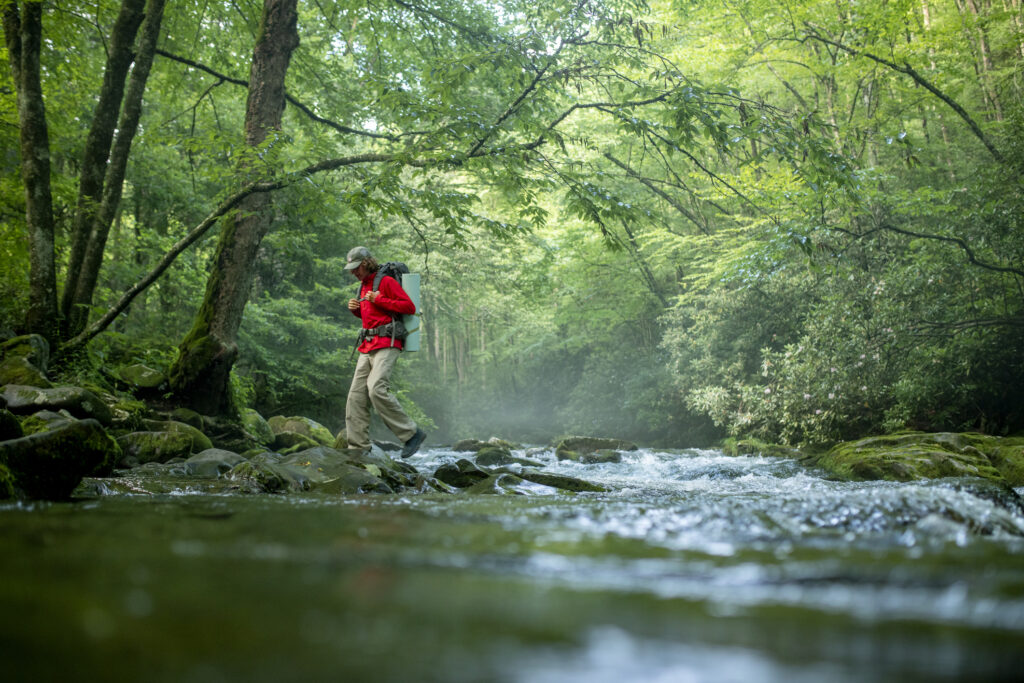
Abrams Falls
Abrams Falls is one of the “Waterfall Quartet”, a group of four waterfalls, including Abrams, Laurel, Grotto, and Rainbow Falls. Although the waterfall is only 20 feet high, it has the highest volume of water, making it the most voluminous falls in the park. It empties into a large, picturesque pool, but swimming is off-limits because of the strong currents and dangerous undertow.
Directions
From Townsend or Gatlinburg, follow signs to Cades Cove. The turnoff for Abrams Falls Trail is located past stop #10 (signed) along Cades Cove Loop Road.
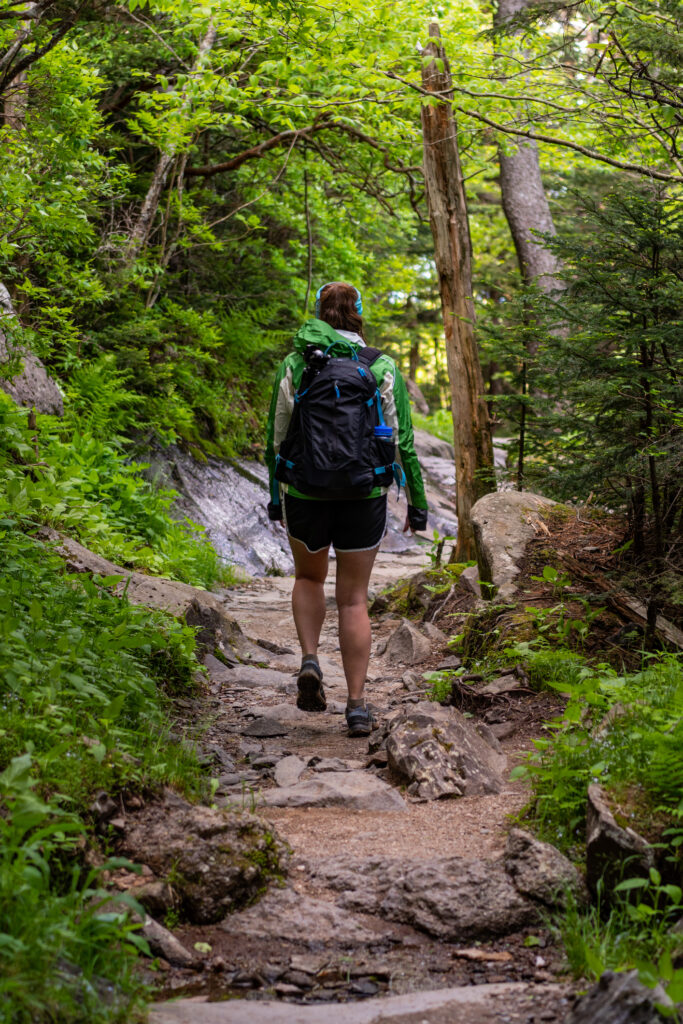
Indian Creek Falls
The Indian Flats Falls is beyond Toms Branch Falls another half-mile, turning right onto Indian Creek Trail. The trail begins as a wide path as it traces Deep Creek upstream. After walking just one-tenth of a mile, there will be a short spur trail on your left that leads down to the 45-foot waterfall. If you were to climb back to the main trail and walk a short distance up, the Indian Flats Falls looks more like a water slide than an actual waterfall.
Directions
Located on Tremont Road near Smokey Mountain Institute at Tremont, near Cades Cove. Hike on Middle Prong Trail to Panther Creek Trail.
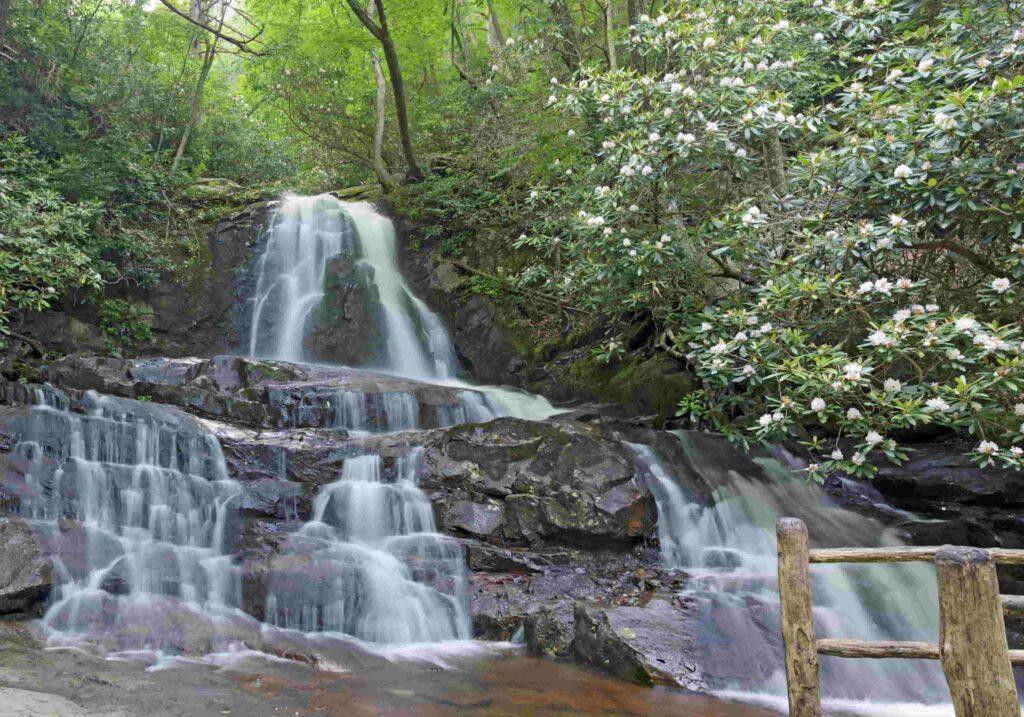
These are just a handful of the waterfall opportunities in the Great Smoky Mountain National Parks. Take the time to do a little more research and find yourself in a world of awe-inspiring waterscapes and hiking opportunities for the whole family.
For more summer adventures in the Peaceful Side, check out the blog links below.
Hidden Treasures in the Peaceful Side
Kid-Friendly Activities on the Peaceful Side
We Have Smoky Mountain Activities Even a Dog Will Love
Keeping busy in the Smokies region isn’t difficult – there are tons of things to do, all year ‘round – but finding activities the whole family, including canine members, can enjoy is a little more challenging. Here are 5 of our favorites.
Maryville-Alcoa Greenway and the PetSafe Pistol Creek Dog Park
There’s nothing like a day out in the park with your dog, is there? Especially when the parks are this nice. The Maryville-Alcoa Greenway is a 9-mile-long paved trail that connects the two cities, passing through a number of scenic areas and public parks, including the Bicentennial Park area, which also includes the PetSafe Pistol Creek Dog Park. Imagine hopping on your bike, riding down the trails with your dog running alongside, only to lounge in the dog park while your best friend burns off the rest of their four-legged energy. Pretty perfect, right?
Smoky Mountain River Rat Tubing
Whether you’re squeezing in a trip downriver before summer disappears or planning one for the next time warmer months roll around, you won’t want to miss an opportunity to go tubing with your dog. They tube for free, so strap on their doggy life jacket, rent a $2 tether, hook up your own tube, and prepare for one of the most entertaining trips down the Little River you can imagine. It’s not every day that you get to go sailing with such a cute first mate, is it?
Fishing the Local Waterways
Bank fisherman have long known the virtues of recreation alongside a (relatively) silent best friend, but did they know that dogs can also be quite seaworthy? Whether you’ve rented, borrowed, or bought a boat and taken it out on Chilhowee Lake or any of Tennessee’s famous tailwaters, the right dog can keep you great company when your free time takes you offshore.
Brewster’s Bark & Bed
You may know that there are great spas in the Smokies region that cater to humans, but did you know that there’s one that’s fully gone to the dogs? Brewster’s Bark & Bed offers everything: coconut and aloe deep-conditioning wraps, skin-soothing mud treatments, “pawdicures” with paw massages, and, should the worst happen, a “smell-u-later” de-skunking treatment.
They also are planning to offer training classes in their private indoor training area, which is a great way to further bond with your pet and give everyone some refreshers when it comes to the basics.
Parkway Drive-In Theater
Interested in catching a movie? Unlike most movie theaters, the Parkway Drive-In in Maryville doesn’t have to follow the rules about not allowing dogs indoors, because, well, they’re not! Well-behaved dogs on a leash are welcome to join their human movie fans and catch a flick out under the stars, even if those canine family members might be more interested in the smells coming from the concession stand, where hamburgers and patty melts (as well as popcorn and the basics) are on offer.
What to Know About Snakes in the Smokies
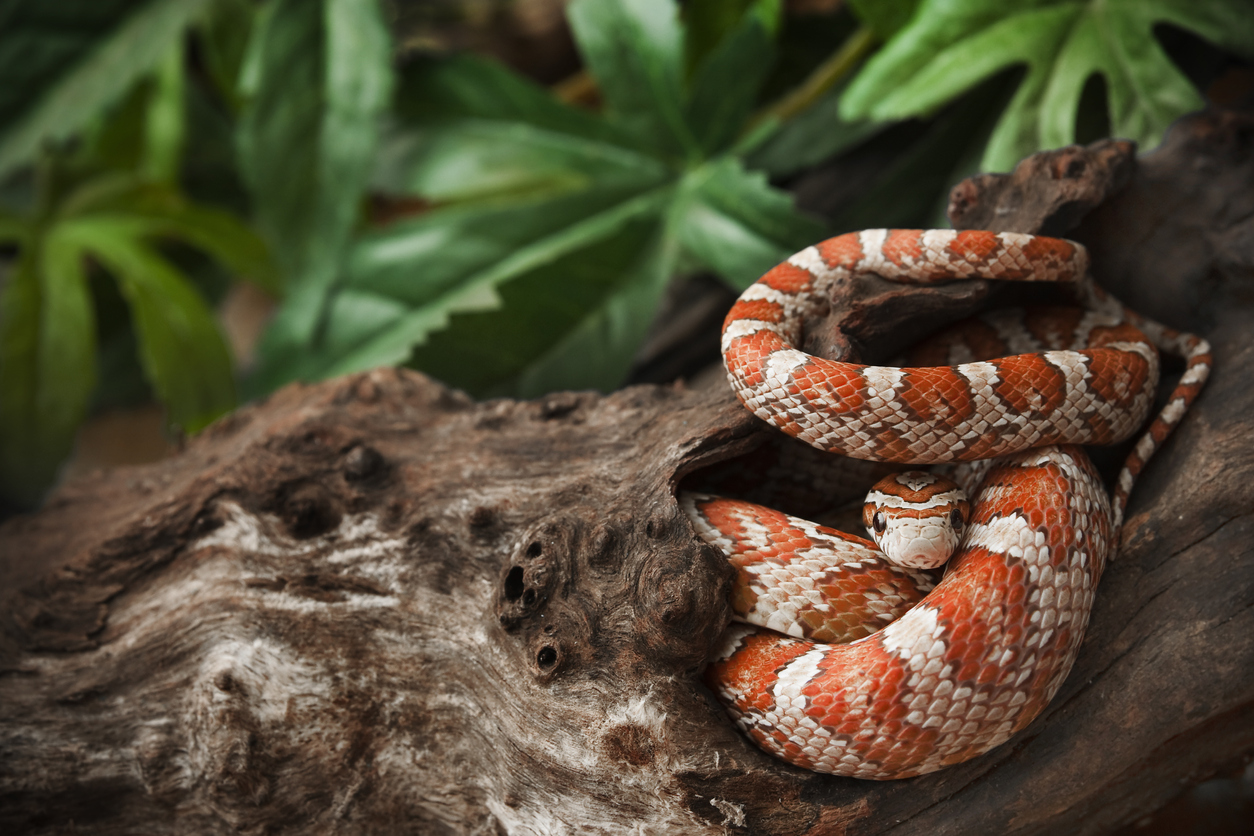
We have put together info and images to help you understand what you need to know about snakes in the Smokies. But the biggest takeaway from this post is that there’s no need to let your fear of snakes keep you from enjoying your time in the Smokies.
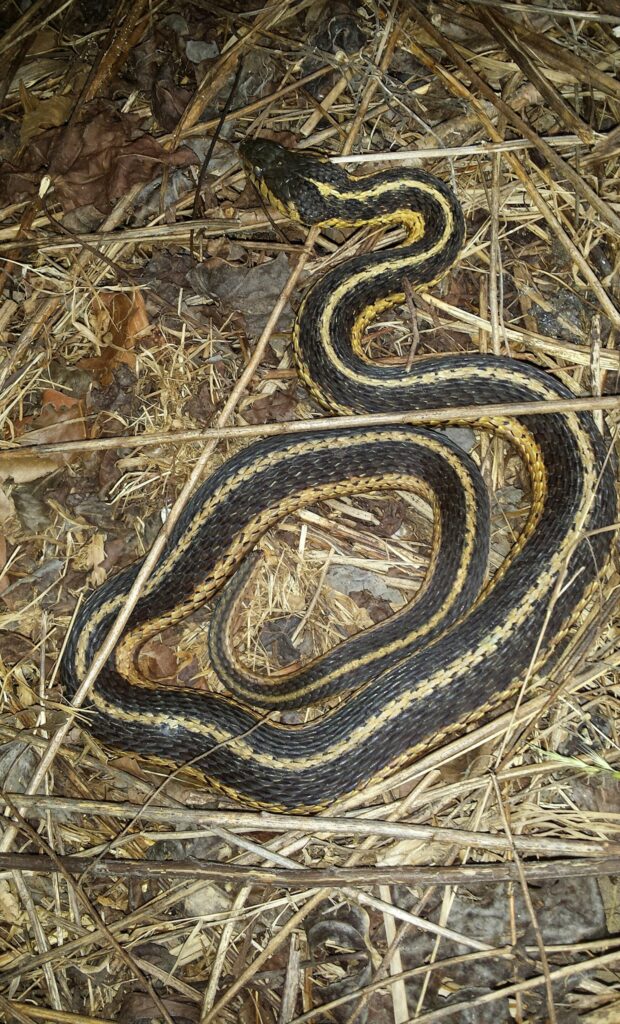
Photo by Randy Ratliff
What Species of Snakes are in the Great Smoky Mountains
Most of the snakes you will encounter on your trip to the Peaceful Side of the Smokies are just that, peaceful and reclusive reptiles. There are 23 varieties of snakes in the Smokies, but only two of them are poisonous. To find a complete chart, including photos of every breed of snake you may encounter during your visit to the Smoky Mountains, click here to visit thesmokies.com/snakes/ website.
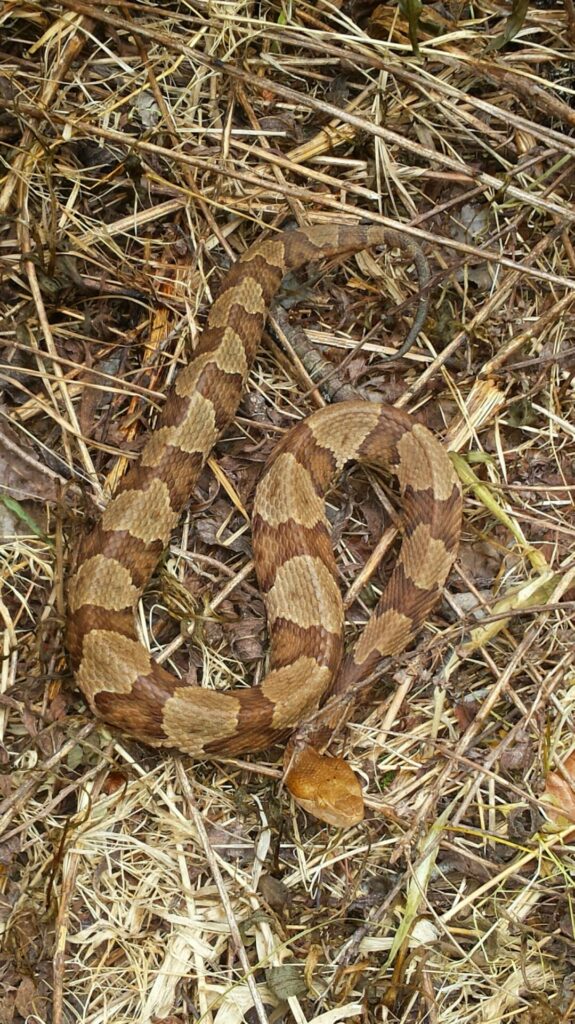
Photo by Randy Ratliff
Venomous vs. Non-venomous Snakes in the Smokies
The two venomous snakes to keep an eye out for are the Timber Rattlesnake and the Northern Copperhead. The Timber Rattler has the most toxic venom of the two species. Still, they will also give off warning signals before striking, that infamous loud rattle that lets you know you are too close. The Northern Copperhead, on the other hand, gives no warning. Although their bite is generally not venomous enough to kill, it will cause significant pain.
There are a few ways to identify venomous snakes in this region. As a general rule, all venomous snakes have triangular-shaped heads with verticle slit eyes. In contrast, non-venomous snakes tend to have rounder heads and pupils. Another easy giveaway is the snake’s habitat. Rattlesnakes tend to prefer rocky outcrops, ledges, and southern-facing hillsides while enjoying sunning on rocks. Copperheads, on the other hand, tend to hide in the crevices of rocks along stream banks. Also, be aware that both hide in manufactured structures like stone buildings and fences. The last thing to look for is the coloring of the snake. Copperheads, as their name suggests, have an identifying copper hue. At the same time, Timber Rattlers are usually brown but can vary from oranges to black depending on where they are during their molting season.
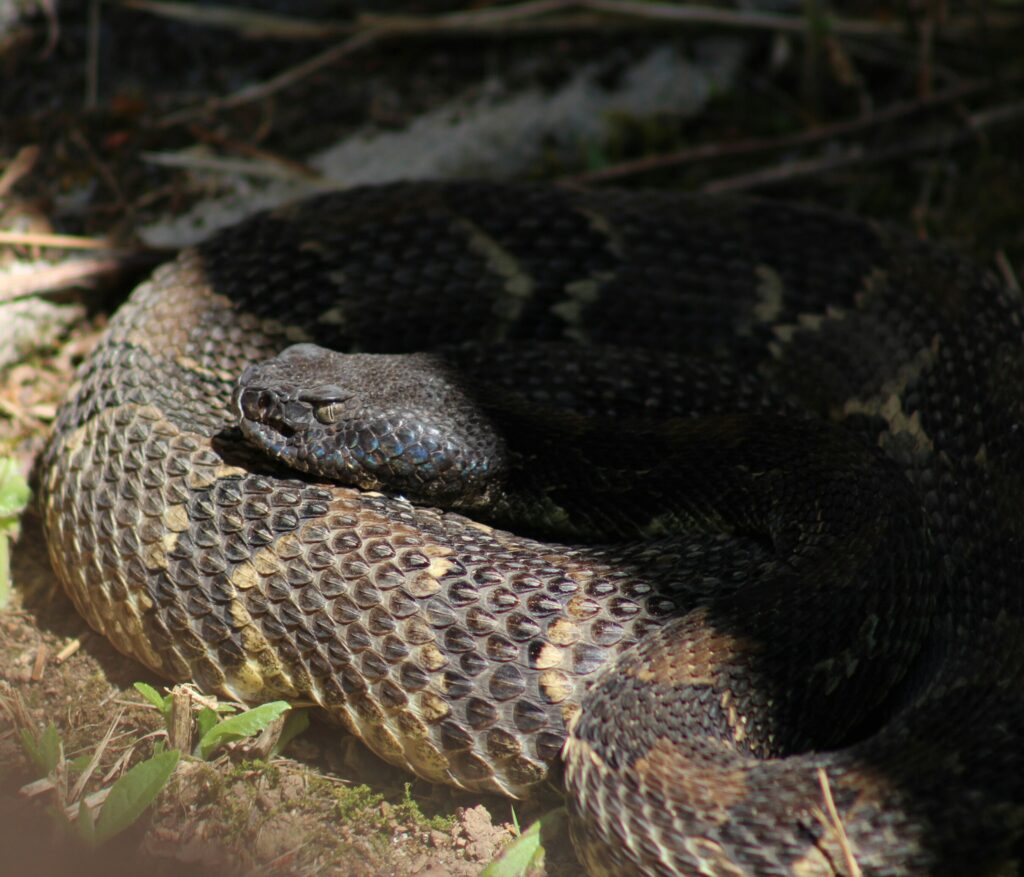
Photo by Randy Ratliff
Be Mindful While Exploring the Smoky Mountains
- Be aware of your environment. Be mindful where you step and pay attention to the warning rattle of an upset rattlesnake. If you are climbing on rocks, watch where you put your hands. Rocky outcrops are favored places for snakes to warm in the sun.
- Wear appropriate shoes. It may seem obvious, but sturdy hiking boots are more likely to protect your feet than a pair of flip-flops.
- Keep children close and explain what they need to look for before you start your exploration.
- Keep a hands-off approach with the snakes. Feeding, touching, teasing, and handling wildlife is prohibited in the national park. Continue to move along and do not interact.
- Do NOT kill a snake if you run across one on your path. It is illegal to kill snakes in the state of Tennessee.
What to Do If a Snake Bites You
First of all, there has never been a recorded fatality to do a venomous snake bite in the park. But if a snake bites you, the most important thing to do is stay calm and call 911 even if you believe the snake was not venomous. Make a note of the snake’s appearance, or even better, get a photo of the snake to show to healthcare professionals. Keep a black sharpie available in your emergency kit, so you can circle precisely where the bite is because, in time, the wound may swell and bruise. If possible, position yourself so that the bite stays at or above heart level. The CDC no longer recommends trying to remove the venom yourself but instead spend that time seeking immediate medical attention.
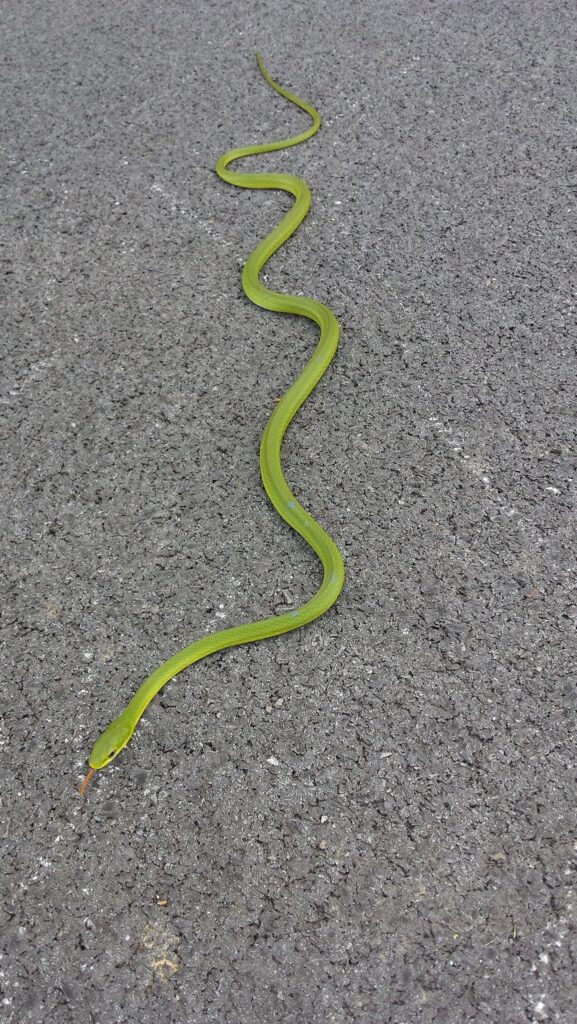
Photo by Randy Ratliff
Snakes are part of the Smokies, but nothing to fear. Make yourself knowledgeable, pay attention to where you step, and be respectful to these mostly peaceful inhabitants. Stay aware of your environment and have a great time enjoying this gorgeous part of the country.
For more posts related to Smoky Mountain wildlife, check out these links below:
Wildlife Viewing and Safety Tips
Smoky Mountain Fly Fishing
Why You Should Get Married in the Smokies
If you are planning to take the plunge and get married in 2019, you should be looking for somewhere spectacular for your wedding ceremony and honeymoon! After all, you only get one wedding day; why not celebrate your special day surrounded by some of the most incredible scenery in the country? The Smokies are considered by many to be one of the most beautiful settings for a wedding in the nation, offer breathtaking views, numerous chapels, plenty of places to hold an outdoor ceremony, and much more. The best place in the country to say, “I do!” is right here in the heart of the Smokies.
The Great Smoky Mountains
It all starts with the Great Smoky Mountains. There are many reasons to visit the Smokies — from the incredible views to outstanding hiking opportunities. But, when it comes to getting married, the mountains offer one of the most spectacular backdrops for weddings in the country. Why wouldn’t you want to celebrate the most important day of your life with the Smokies in the background?
Location, Location, Location
From a quiet, secluded cabin or lodge deep in the woods to hosting the ceremony on a mountaintop, you won’t have a problem finding the best possible location for your special day. There are so many locations to choose from, you may want to start looking now as many of them book up months in advance.
Cost-Effective
No one really wants to have to sit and count pennies as they make their wedding plans, but this doesn’t mean you shouldn’t be conscious of costs. Along with being voted as one of the top 5 wedding locations in the country, the area has one of the lowest marriage license fees. Out of town couples can purchase their marriage license for as little as $38.50 (based on method of payment).
As a bonus, out of town couples do not have to take the mandatory 4-hour marriage counseling class that is required in Tennessee, nor do they have to take a blood test. Plus, you won’t need any witnesses to make the marriage legal.
And When the Celebration is Over…
It is becoming more and more popular for newlyweds to take their honeymoon in the same location their wedding took place. What better place to spend your honeymoon than at one of the many cabins, hotels, or B&Bs right here in the Smokies? Not only will spending your honeymoon here save you money, but it gives you and your new husband/wife a chance to explore all that the Smokies have to offer while you enjoy life as newlyweds.
From hiking to whitewater rafting — and horseback rides deep into the Great Smoky Mountains National Park that take you into meadows filled with an amazing array of colorful wildflowers that start to bloom in spring and remain bright and beautiful all summer — the Smokies are a wonderful place to spend your first few days together as a married couple.
Everything you need to enjoy an unforgettable wedding in the Smoky Mountains can be found right here in Blount County. Be sure you book your wedding location and honeymoon suite early as this is a very popular wedding destination with people coming in from all over the country and the world to celebrate their nuptials!
Wildflowers of the Smokies

Anyone from this area knows that Spring is a vibrant and unique reminder of life and beauty. Not only has the frost given up its last gesture for the year, but the Wildflowers of the Smokies are finding their voices and demanding acknowledgment. Our friends and photographers, Randy Ratliff and Laura Matthews, have provided many of the beautiful images below.
There are over 1,600 different types of flowering plants covering the mountains in the Smokies. We’ve selected a few of the easiest-to-recognize flowers below, but we’d love to hear about or see pictures of your favorite Smoky Mountain Wildflower. Click here for a broader guide to the beauty found in our mountains.
However, today we encourage you to take the family hiking with a scavenger hunt in mind. Remind the kids how “April showers bring May flowers.” To find the best of Spring’s ensemble, you don’t have to look hard, but here are a few for your cheat sheet. See who can be the first to find each of these common wildflowers.
Wildflowers of the Smokies
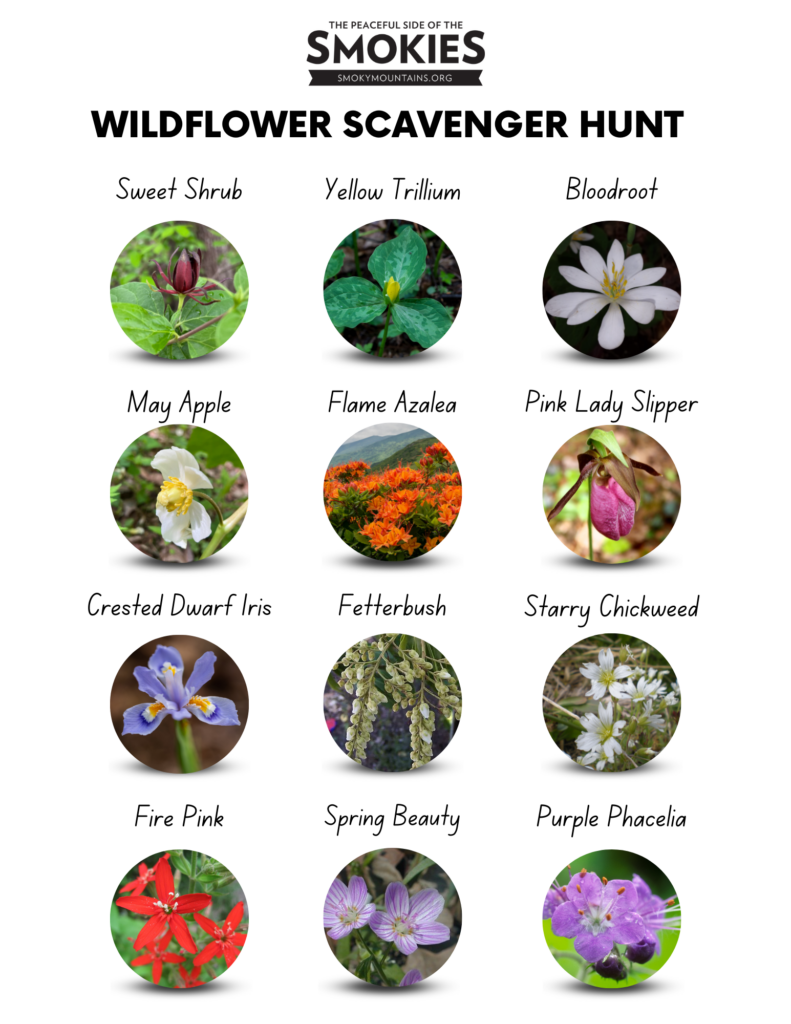
Smoky Mountain Wildflower Trails
Gregory Bald – This fairly strenuous hike is 11.3 miles roundtrip and includes 3020 feet of elevation gain. At the summit, you will find Flame Azaleas in abundance. According to the Great Smoky Mountains Natural History Association, the various hybrids of azaleas on Gregory Bald are so impressive and unique that the British Museum of Natural History has collected numerous samples. Folks come from all over the world to see the many acres of wildflowers of the Smokies showcasing colors of fire red, wine red, orange, yellow, salmon, pink, white, and multi-colored azaleas that reach peak season around June.
Chestnut Top Trail – This moderately strenuous hike is 8.6 miles roundtrip and includes 1486 feet of elevation gain. Wildflowers sprout early on this trail, where you can find a variety of blooms like white trillium, purple phacelia, and star chickweed in March and early April.
Rich Mountain Loop Trail – This moderately strenuous hike is 8.5 miles roundtrip and includes 1736 feet of elevation gain. Rich Mountain Loop is a beautiful hike of Cades Cove if you don’t feel like sitting in the hours of gridlock on the 11-mile loop accessible to cars. Get even better access on Wednesday and Saturday mornings during the summer months when the park closes the loop road for bicycles, as well. As you get further along the loop, you will find one of the most diverse amounts of wildflowers in the Smokies.
White Oak Sinks – The trail comes to life with a carpet of thousands of wildflowers. It’s located between the Townsend “Y” and Cades Cove.
Middle Prong Trail – The trailhead for the Middle Prong Trail is at the end of Tremont Road close to the Townsend “Y.” As you hike along this old dirt road, you should see toothwort, foamflower, violets, trilliums, and wood sorrel. Along with the fantastic wildflowers, there are waterfalls to discover and cool off in, as well.
We hope your scavenger hunt is a success and you are able to explore places in the park you haven’t ventured into yet.
Wildflower season is here and will continue to bloom throughout the summer. Come visit soon, and make sure to bring your camera, so you can become as amazing an amateur photographer as our friends Randy and Laura!


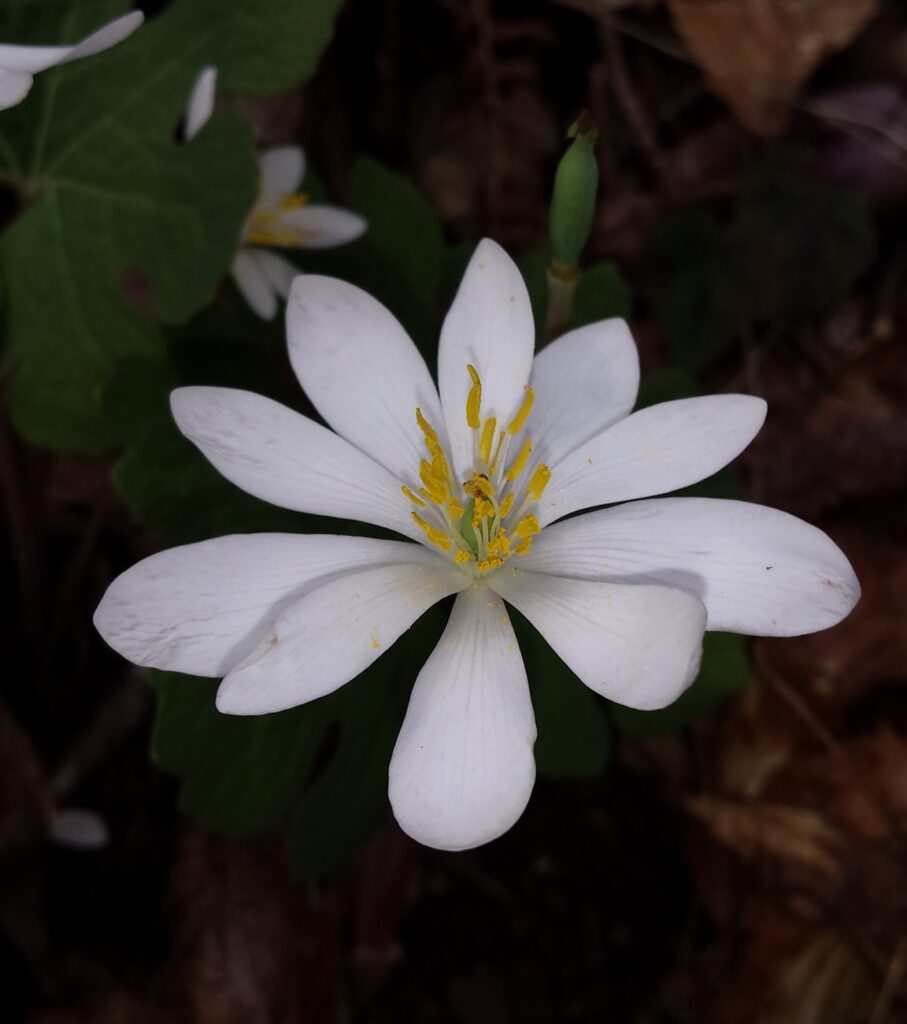

All the parts of the plant, except the fruit, contain podophyllotoxin, which is highly toxic if consumed but was used by Native Americans for a variety of medicinal purposes- and is used today in prescription drugs.



The sepals of its blue-violet flowers are distinctly marked with a central yellow or white, purple striped band.

They are born in showy clusters and have a pleasant honey-like fragrance


The fire pink is a member of the carnation family. The brilliant flowers attract the ruby-throated hummingbirds, one of the species’ primary pollinators.

This attractive wildflower is a sure sign that spring has arrived and that the local woodlands are full of wildflowers.

Look for the beautiful purple flower blooming in clusters on slopes and rocks.
For more ideas to enjoy springtime in the Great Smoky Mountains, check out these posts:
Vee Hollow Mountain Bike Trails
Springtime in the Smoky Mountains
Wildlife Viewing and Safety Tips

One of the best parts of visiting the Great Smoky Mountains is all of the wildlife unique to this region of the world. In fact, there are 65 mammal species alone. Animals like elk, coyotes, raccoons, bobcats, white-tailed deer, and black bears are essential parts of the park’s ecology. But there are also smaller inhabitants with valuable functions, like fireflies, turtles, bats, chipmunks, and salamanders. To make your adventure the best, here are some wildlife viewing and safety tips for the Smokies.
Best Locations for Wildlife Viewing
-
Bears
Just under 2,000 black bears live in the Smoky Mountains, so the probability of seeing a bear is high. But, if you want to increase your odds, check out the Cades Cove area in the park’s western region.
-
Bobcats
These nocturnal and reclusive animals are the only feline that lives in the park. Because of their solitary lifestyle, you can count yourself lucky if you spot one of these beautiful cats.
-
Elk
In 2001, the park officials reintroduced 25 elk into the Great Smoky Mountain National park, and the following year they reintroduced 27 more. After 200 years, elk are being spotted in Tennessee again. Elk are most active in the mornings and are most readily spotted in the park’s Cataloochee section.
-
White-Tailed Deer
– The white-tailed deer is the smallest of the deer species and is a common sight in open areas like Cades Cove.
-
Fireflies
There are 19 firefly species in the park, but one of the most unique is the synchronous fireflies. Each year, these beautiful creatures put on a spectacular show in the Elkmont area of the park during their mating season.
For some more information on some of your favorite wildlife in the Smokies, check out our friends at www.wildlifeinformer.com and www.smokymountains.com.
Wildlife Safety Tips
Often when we first discuss wildlife safety tips, many people assume we are giving directions to keep humans safe. And while human safety is essential, much of this information is in place to maintain our wildlife’s safety.
-
Never Approach
The national park’s Code of Federal Regulations states no one can willfully approach wildlife within 150 feet or any distance that disturbs or displaces the animal. This rule also includes letting animals approach you. We do this to maintain our safety, but this also respects the wildlife’s natural habitat. Instead of coming closer, use binoculars, spotting scopes, or cameras with telephoto lenses to enjoy the animals.
-
Never Feed
You may think feeding the animals could cause no harm, but you are very wrong. Nearly 10,000,000 people visit the park each year, so if only 1% of our visitors fed the wildlife, that would be 100,000 people a year. This interaction teaches the animals to associate humans with food, and if the animals lose their fear of humans, they become dangerous and unpredictable. Dangerous and unpredictable animals aren’t safe for visitors and often end up being euthanized. So, next time you feel inclined to feed the precious, hungry bear cub, keep in mind, you may be signing its death warrant. We also want to emphasize the importance of properly storing food and trash disposal while picnicking, camping, or staying in the park because it has the same consequences.
-
Do Not Disturb Natural Habitat
The park is our wildlife’s homes. How would you feel if your guests came into your house and started reorganizing your cabinets or moving around your furniture? You would be frustrated and feel disrespected. Animals feel the same about their homes. But there is another danger level when you move vegetation in the forest or change the rock formations in a creek, etc. These activities can potentially change the environmental impact within the park entirely, which will significantly affect the wildlife.
Whether you are visiting the park for the day or spending a week camping off-trail, your actions play into the wildlife’s ability to thrive in their natural habitats. Keep these wildlife viewing and safety tips at the front of your mind on your next visit to the Smokies.
I would also like to thank visual storyteller Randy Ratliff for most of the beautiful photography in this post.
For more Smoky Mountain fun, check out these blog posts:
Here are 7 Reasons You’ll Be Glad You’re Visiting the Smokies this Fall
Our Top 3 Favorite Fall Hikes for Viewing Fall Foliage in the Smokies
Wineries, Breweries and Distilleries in the Smokies: Create Your Own Tour in Blount County
For those of you who are over 21 and looking for something a little more “adult” to do while you are touring the Smokies, why not follow a local tradition and check out some of the fabulous local breweries, distilleries, and wineries to be found in the area. From a frosty glass mug of Windy Gap Wheat Beer to Moonshine Cherries and Blackberry wine, the local beverages truly showcase this area’s history of making alcoholic beverages. One thing to keep in mind as you go along on your tour, someone has to be the designated driver, or you might need a taxi. Consider these fantastic watering holes as part of your journey to taste the best of the best in the Gatlinburg area.
Start at the Sugarland Cellars Working Winery
For the wine connoisseur, the Sugarland Cellars Winery offers tours through this working winery complete with live music playing on the Spirit Stage, a stop in the gift shop for a few souvenirs, and then on to the tasting room. All of the wines made here are crafted from local grapes grown in the shadow of the Smokies by families who have been producing these incredible grapes for many generations. Don’t forget to take a bottle or two of their delicious wine home with you.
Time for a Microbrew at the Smoky Mountain Brewery
This area of Tennessee may have earned a reputation for making moonshine, but in recent years the number of microbrews made locally might surprise you. When you drop in for a visit at the Smoky Mountain Brewery, you can order any one of several local microbrews to sample, or better yet, order a “flight,” and your server will bring you a sample of four different local beers. They also offer pizza, burgers, and more for when you need a little food to absorb the beer.
Sample Genuine Tennessee Moonshine at the Sugarlands Distilling Company
You can’t vacation in Tennessee without sampling the alcoholic beverage that helped to make the area famous. Of course, we are talking about moonshine, and if you want to sample some the best in the area, you need to stop in at the Sugarlands Distilling Company and taste their unique flavors. One of the most popular is the apple pie flavor, made using caramel and Granny Smith apples. While you are sampling the many flavors, take a moment to listen to stories about the Appalachians, take the tour, check out the live music and stock up on your favorite flavors.
The First Licensed Distillery in East Tennessee – The Ole Smoky Distillery
The Ole Smoky Distillery enjoys the distinction of being the first distillery making moonshine in East Tennessee to receive a federal license allowing them to produce their own moonshine and sell it to the public. It’s also come a long way from the days of “running shine” in a 1940 Ford with a flathead V8 and a trunk load of “white lightning” while trying not to get pulled over by the “man.” Today, the distillery produces a selection of superb moonshine in assorted flavors for you to sample. Take the tour, try the moonshine infused foods, and take a look back at where NASCAR got its start.
Come to East Tennessee for the fun, the family-friendly atmosphere, and the many things to do in the Gatlinburg area, but whatever else you do, make sure you leave plenty of time to tour the local breweries, distilleries, and wineries along the way.
Winter Activities Abound in the Smokies: Here are Our Top 5 Favorites
Are you eager to experience The Smokies in every season? While the springtime is truly glorious and full of beautiful blooming trees, wildlife and lovely weather, the summer is tough to beat with its seemingly endless days of great conditions and nights of twinkling stars. Many would argue that the autumn is the best because of the weeks and weeks of foliage and the different harvest events.
What about winter? There is actually just as much to see and do in the winter months as there is at any other time of year. We’ve listed our five favorite activities, and maybe a few extras!
#1 Skiing
Lots of people don’t realize that The Smokies are home to great skiing, particularly that at the Ober Gatlinburg. Close to the cities of Gatlinburg and Pigeon Forge, it is a year-round attraction with an alpine slide, ice skating, lots of restaurants, and activities for kids. Yet, the winter is when it really shines, offering skiing, snowboarding and tubing. You can even learn to ski here!
#2 Hiking
While most of us don’t like to head outside and into the wilderness during the cold of the winter months, the Great Smoky Mountains National Park has some amazing hiking options open and available. In fact, it is one of the few times the park is nearly crowd-free so you can enjoy some stunning views and even trek into some of the waterfalls, frozen over for the season. Check with the park’s website for information about open trails and roads. NOTE: Cades Cove is usually open and winter is a great time to spot some local wildlife.
#3 A Train Ride
This sounds unusual, but the Great Smoky Mountain Railroad operates all of the way to January 1st and provides a lovely ride along the river and through the woods. In fact, you can even hop aboard the “Polar Express” and savor a holiday stop at the North Pole! Visit the railroad’s website for a full schedule.
#4 Big Events
From the Gatlinburg Winter Magic Trolley Ride of Lights to the Pigeon Forge Winterfest Driving Tour of Lights, there is a tone of Christmas activity beginning in November and lasting through the end of the year. Townsend has a Christmas Parade, a Reindeer Run and more.
#5 The Peace
It is impossible to argue that the area has an entirely different sort of peacefulness that settles over it along with winter’s snows. There are a lot of cozy cabins and chalets available in the mountain areas and down in the towns, and a stay booked at one of them can be an unforgettable experience. Imagine cozying up by your fireplace, gazing out at the snow-covered mountains and enjoying time with family, friends or just on your own during this remarkably peaceful time of the year.
Of course, the many amazing restaurants, shows, parks and museums of the area remain open year-round, and are a reason to head here for the winter months. You can also warm up with a wine or whiskey sampling tour or spend your day shopping in the Arts and Crafts Community over at Gatlinburg or the different areas of the towns. There’s much to see and do, and winter is a great time of year in the Smokies.
Winter in the Smoky Mountains: Advantages & Hiking Tips

When people think of hiking in the Smoky Mountains, the most popular times of year are generally Spring through Fall. But the Smoky Mountain National Park is open year-round, and winter brings a unique beauty. We’ve put together some of the best reasons you need to get out and enjoy the Smokies this time of year, along with some valuable Winter Hiking Tips.
Exploring The Smoky Mountains in Winter
Are you in the mood for a more challenging hike, like Thunderhead Mountain (elevation: 5527 feet) and Gregory Bald (elevation: 4949)? Or would you prefer a short, invigorating trek to Look Rock Fire Tower on Chilhowee Mountain, off the Foothills Parkway? If you haven’t already explored, here are several reasons to take that journey in winter. First of all, the most apparent difference while hiking in the cold months is the lack of foliage on the trees. Some trails become very narrow during the summer, so hiking when there is less vegetation can be a relief for the more claustrophobic traveler. And can we talk about the views during the winter? Once the trees shed their leaves, a more pristine view of the magnitude and breadth of our lovely mountains reveals itself.
In the winter months, you will also find that you often have the trails all to yourself. Not only will you see fewer people on your journey, but there will also be a fraction of insects and bugs. There is a special kind of peace when the forest blanketed with silence, your only companion the sound of crunching leaves and falling snow. Another welcome absence on a winter hike is the sometimes stifling summer humidity. Winter in the Smokies is a definite case of less is often more.
Tips for Hiking the Smokies in the Cold
- Always check the weather and be prepared for it to change.
- Snow/ice spikes and trekking poles will help with traction and stability.
- Don’t be afraid to spend the extra money to get top quality winter gear. Waterproof and windproof gear can be lifesavers when the windchill at the higher elevations create dramatic temperature drops.
- Layering is essential. Choose wet-wicking material and a light but warm coat, such as a down jacket. Be prepared to layer up or down depending on changing altitudes and surprise weather. Wool socks and appropriate hiking boots will keep your feet warm and a toboggan will prevent body heat from escaping through your head.
- Extras. Pack extra socks and gloves in case the ones you are wearing get wet. Extra HotHands or hand warmers are great for putting in your sleeping back for overnight hikes. Remember, it is better to have a heavier pack, with everything you need, than finding yourself hurt or in danger.
Don’t Forget Your Camera
Take advantage of the season to find those distinctive winter shots. You may discover animal prints in the snow or icy rivers. Look for the way the sun reflects on the frosted mountains and expect to see a whole new side of the Smoky Mountains’ personality.
Feature Image by Nikki Adam Jenkins
Check Out These Fun Activities on the Peaceful Side:
Best Views for Sunrises and Sunsets
Your Group will Love the Campgrounds in Great Smoky Mountains National Park
With the summer coming to a close faster than you expected, there’s never been a better time to get in that last-minute camping trip to the Smokies! Here on the peaceful side of the Smokies, you’ll find plenty of camping opportunities that you and your family will love. Easy access to the Little Pigeon River, the Great Smoky Mountains National Park, and many other natural attractions make camping in the Smokies perfect for your summer getaway.
Where to Go Camping in the Smokies
Blount County is perfect for camping in the Smokies, for many reasons. Here on the peaceful side of the mountains, we have many family-friendly attractions that are ideal for a relaxing, leisurely vacation. Bring your RV to Whispering River RV Resort, or try staying at Carpenter Campground in Maryville. Many of the local campgrounds have park-like settings with playground equipment, access to streams where you can fish, and other activities right there in the campground.
Glamping, Cabin Rentals, and Other Camping Alternatives
If you prefer something a little more stylish for your camping adventure, Blount County campgrounds do also offer “Glamping” tents and cabin rentals. You can stay in luxury and enjoy a unique camping experience, while still getting to be close to all the beautiful natural sights in the area. The Little Arrow Outdoor Resort is the prime location to check out glamping tents, tiny homes, and luxury cabins. The area also has a dog park, so you can bring the whole family along for the fun.
Easy Access to the Exciting Fun All Around the Smokies
One way that camping in Blount County will excite your entire group of campers is the easy access to the nearby fun of places such as Pigeon Forge and Gatlinburg. You can enjoy the beauty of the mountains, the small-town atmosphere, and the peaceful pace of Blount County – and they can check out Dollywood, or many of the other fun activities just a short drive away. Don’t forget to take a hike through the many walking trails in Blount County that lead you through the beautiful mountains.
Leisure and Wanderlust Come Together When You Go Camping in the Smokies
This area is perfect for scratching your itch to travel, while still having a very pampered vacation. You can absolutely get close to nature with camping fun, and still have plenty of luxury. From delicious local fine dining, luxury amenities in many of the campgrounds, to nearby spas and resorts, and lots of other relaxing or romantic things to do all around, you won’t find a better place to combine your sense of adventure with your desire to relax.
Pack up your family today and head to the Smokies for a fun camping adventure that will please everyone!

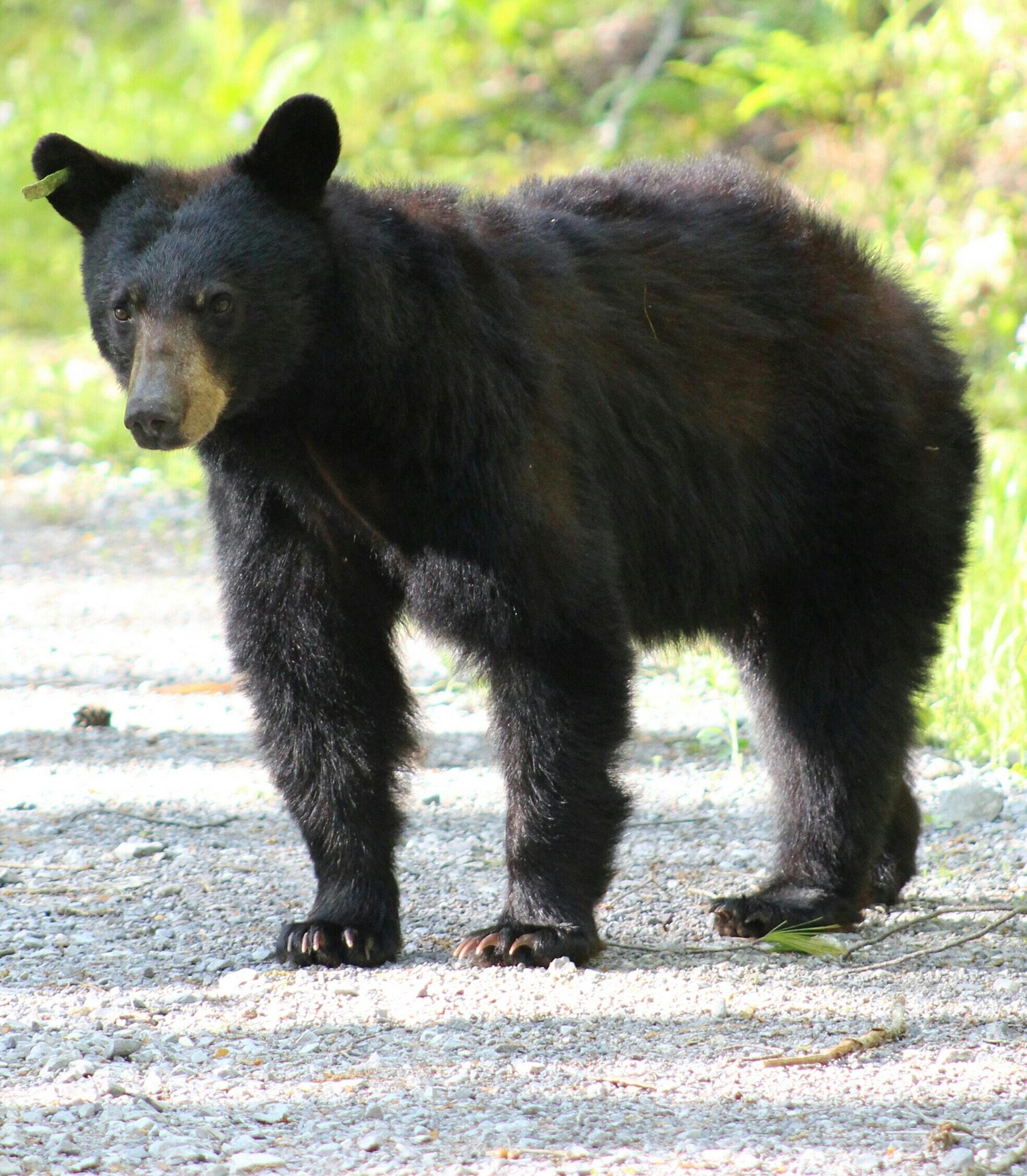
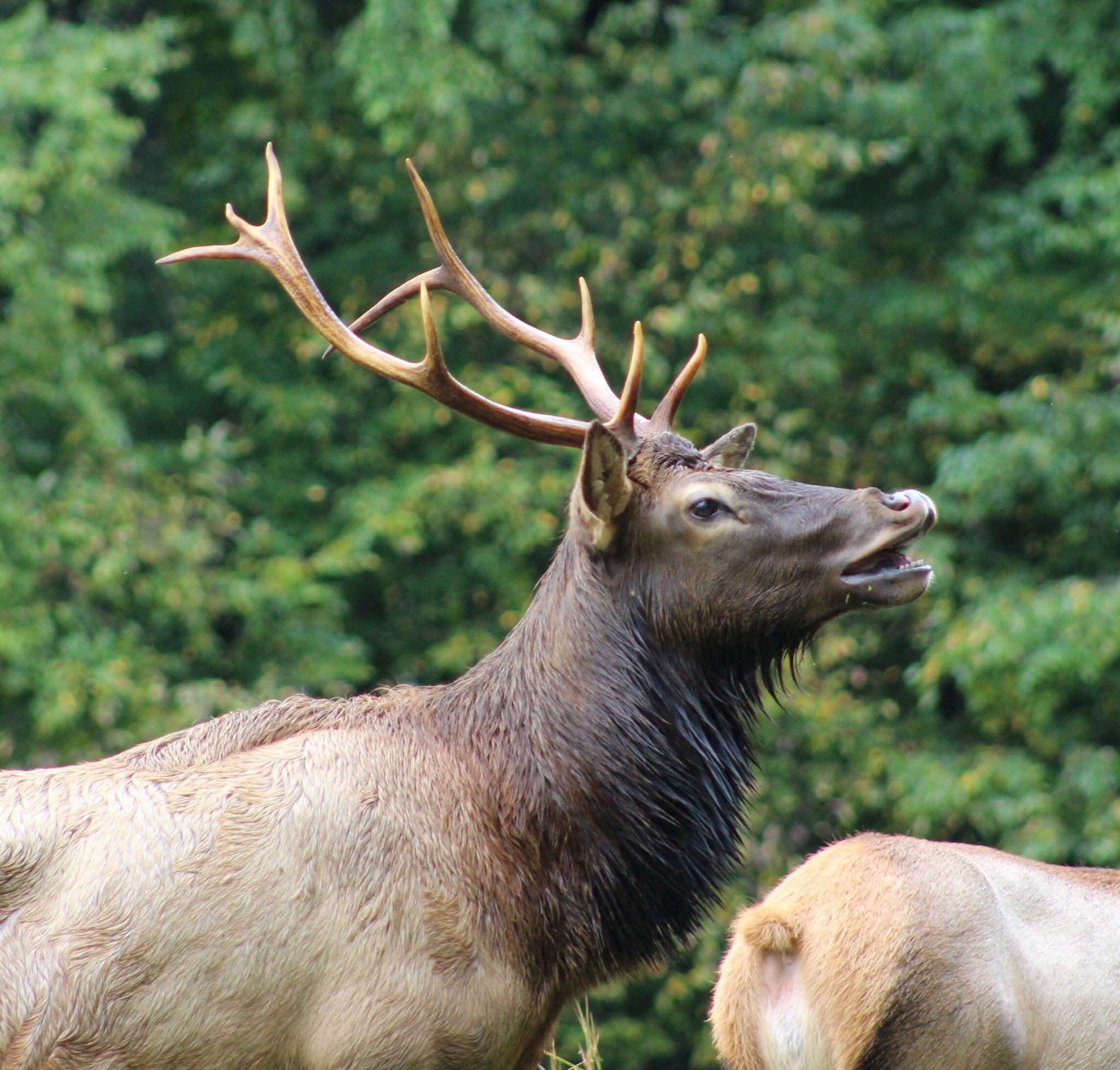
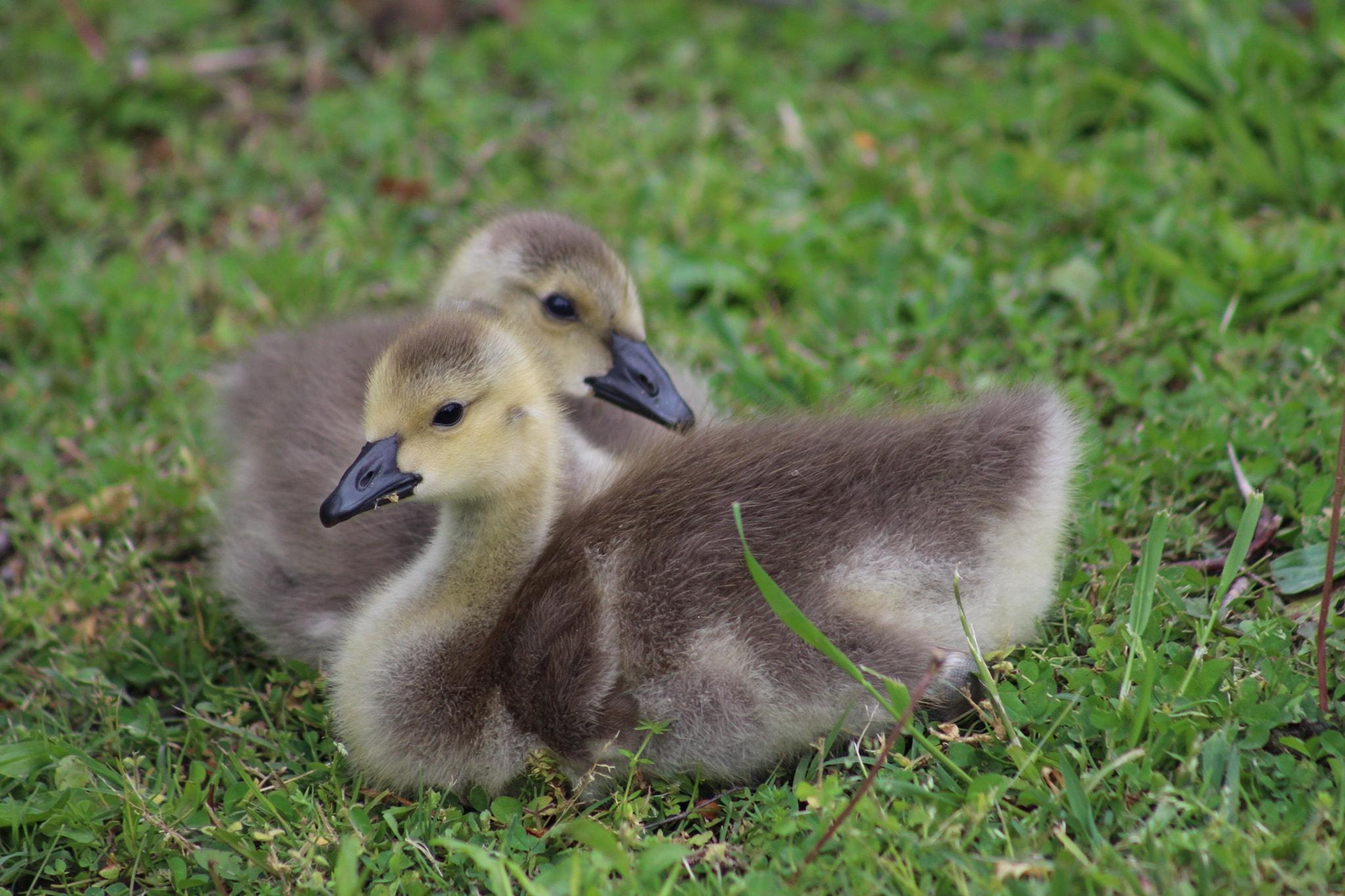
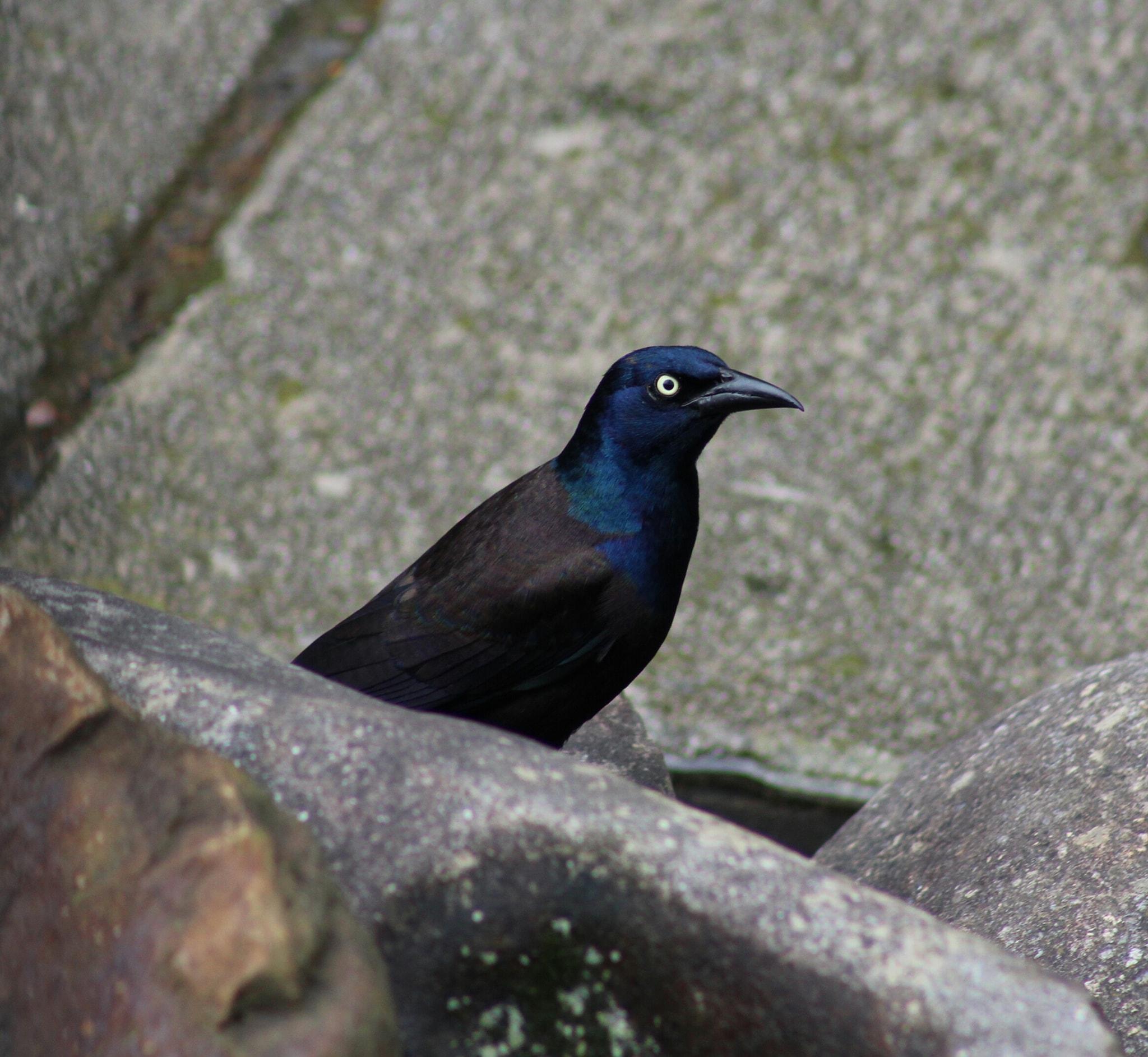
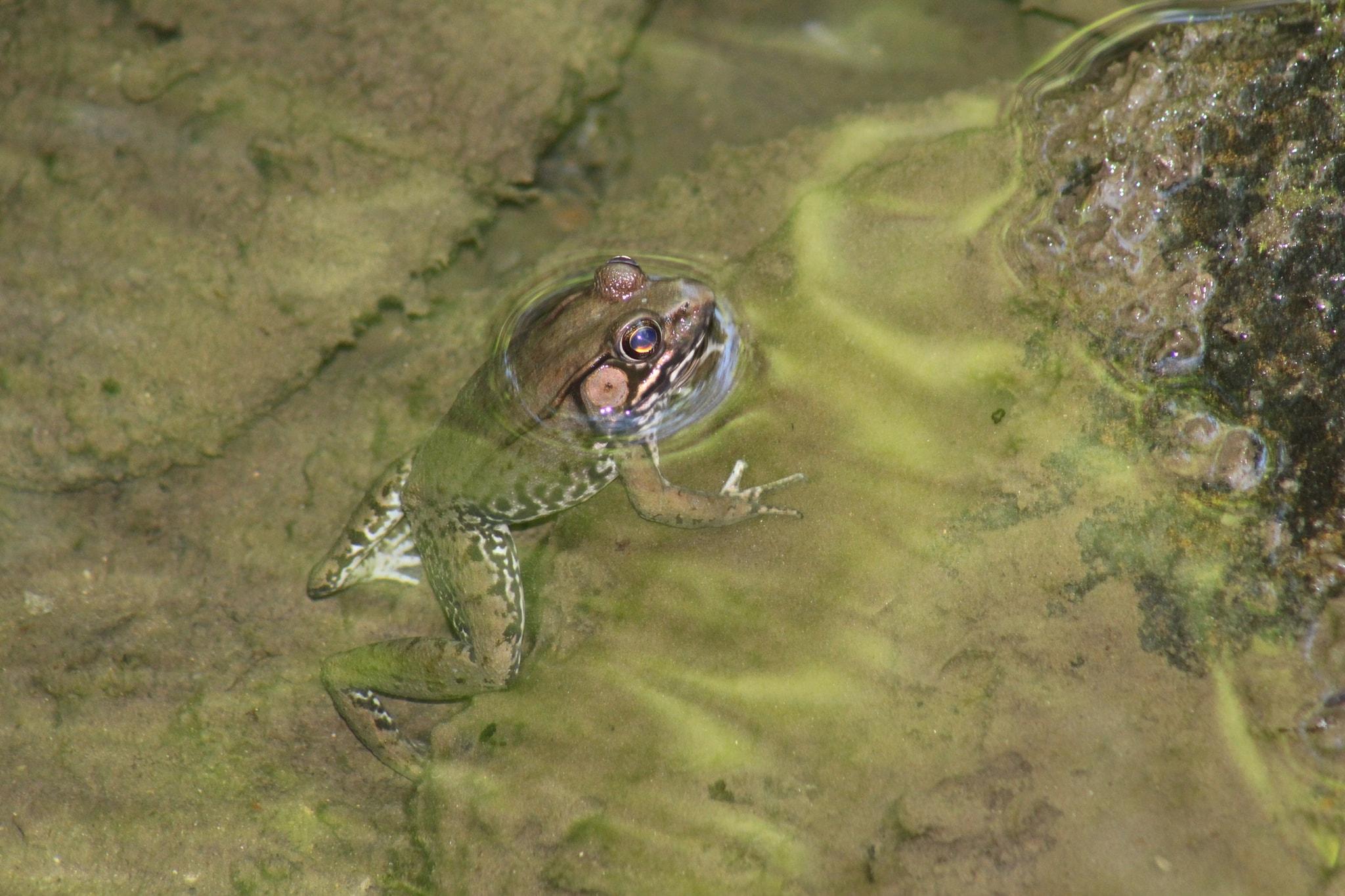
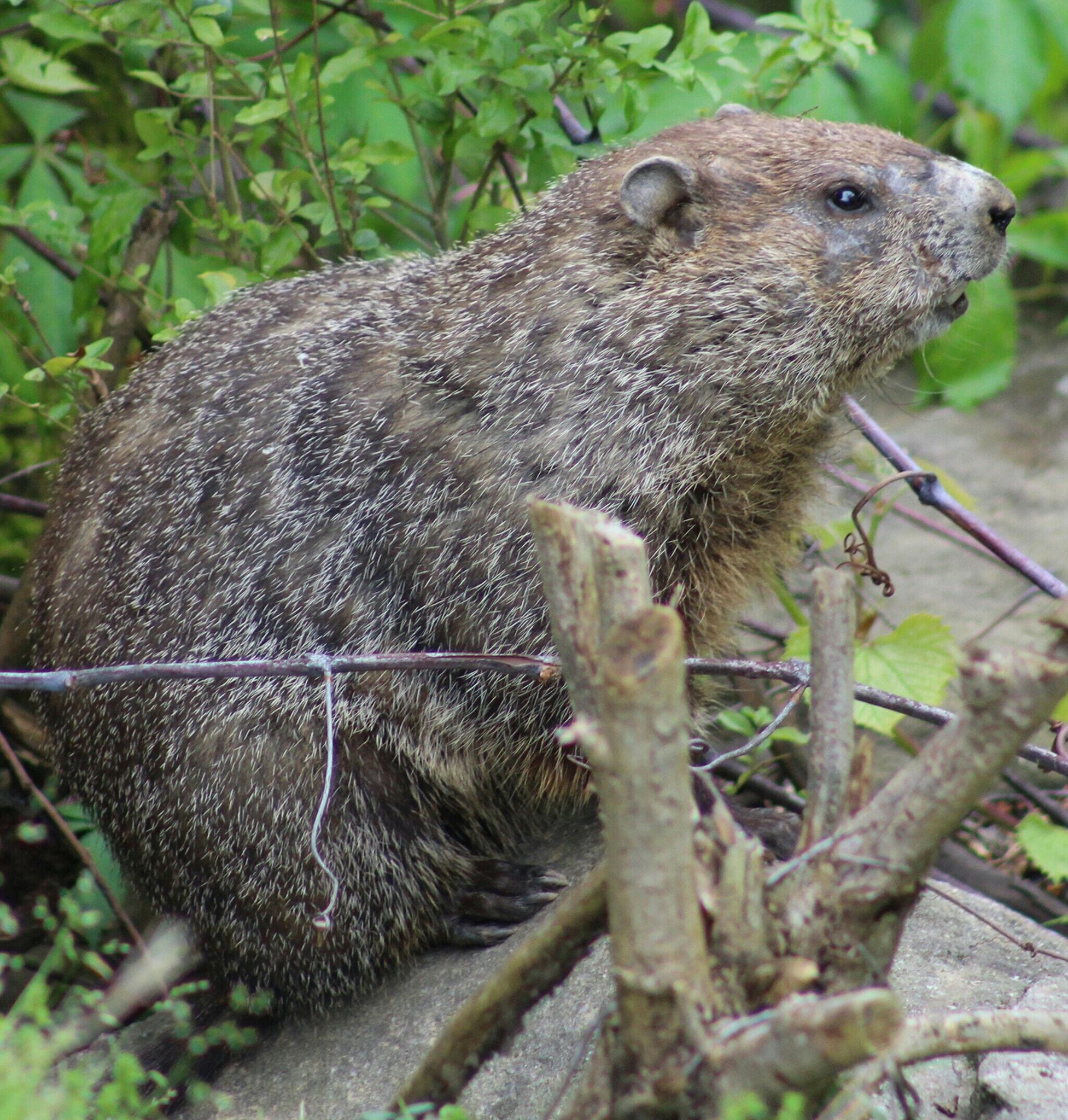
Recent Comments